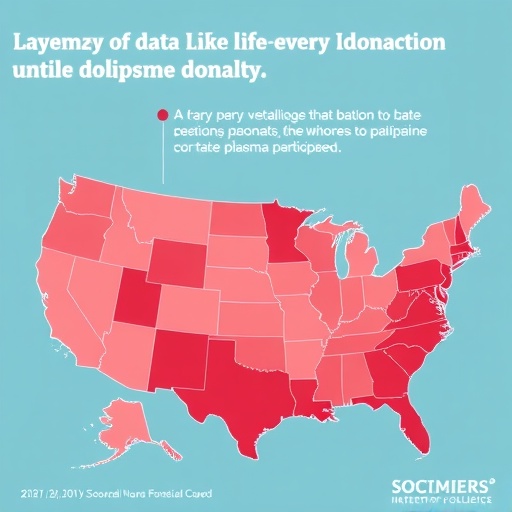International Plasma Awareness Week Shines Spotlight on Critical Need for Plasma Donation Amid Rising Medical Demand
October 6 – As the global community marks International Plasma Awareness Week (IPAW) from October 6 to 10, urgent attention is brought to the indispensable role plasma donation plays in modern medicine. A recent comprehensive survey involving over 1,000 American adults reveals a paradox: while nearly three-quarters recognize that plasma-derived therapies save lives, the vast majority have yet to participate in plasma donation themselves. This contrast underscores a pressing need to enhance public understanding and engagement regarding plasma donation.
Plasma, the straw-colored liquid component of blood, constitutes approximately 55% of blood volume and carries a rich array of proteins vital for maintaining bodily functions. Unlike whole blood, plasma serves as the exclusive source material for manufacturing plasma-derived medicinal products (PDMPs). These therapies address a range of life-threatening conditions, including primary and secondary immunodeficiencies, hemophilia, and severe burns. Moreover, plasma proteins are essential in surgical and emergency interventions by supporting clotting and immune responses.
The scientific foundation underpinning plasma-derived medicines is particularly compelling. Plasma proteins such as immunoglobulins, clotting factors, and albumin are isolated and purified through processes like fractionation and chromatography. These sophisticated biotechnological methods ensure high purity and safety standards, enabling clinicians to administer targeted therapies that restore critical physiological functions in patients suffering from chronic or acute conditions.
This surge in medical applications is propelled by ongoing clinical research and improved diagnostic capabilities that have expanded the recognized indications for PDMPs. As a result, the demand for plasma is experiencing exponential growth, far outpacing supply. Notably, synthetic alternatives cannot replicate the complexity and diversity of native plasma proteins, making human plasma donation irreplaceable in this domain.
Despite the life-saving potential of plasma donation, survey data indicates that eight in ten respondents have never donated plasma, pointing to persistent barriers such as limited knowledge about the donation process and misconceptions about risks. Nearly half of non-donors report insufficient information regarding plasma collection and its significance, while many conflate plasma donation with whole blood donation, a distinction critical for donor recruitment and education efforts.
A revealing aspect of public perception uncovered by the survey is the perceived imbalance between blood and plasma needs. Approximately 65% of participants believe donated blood is more urgently required than plasma, and 60% consider blood donation more beneficial to the larger population. This misconception highlights a gap in public health communication, where the specialized yet equally crucial role of plasma must be emphasized to galvanize donor participation.
Advocates within the plasma community emphasize the heroic contribution of plasma donors. Anita Brikman, President and CEO of the Plasma Protein Therapeutics Association (PPTA), stresses that plasma donors are vital to sustaining global health infrastructures. “Plasma donation is a selfless gift that sustains hundreds of thousands dependent on these therapies,” Brikman said, emphasizing the need to elevate public awareness to meet the growing clinical demands.
Personal testimonies underscore the profound impact plasma therapies have on patients’ quality of life. Lillie Hunnicut, a patient diagnosed with common variable immune deficiency, recounts how plasma-derived immunoglobulin treatments enabled her to reengage with active pursuits previously hindered by her condition. “These therapies transform lives, facilitating not just survival but flourishing,” Hunnicut remarks, highlighting the human dimension behind donor efforts.
From an epidemiological standpoint, the need for plasma-based treatments is anticipated to rise as primary immunodeficiencies and other eligible conditions continue to be underdiagnosed. Jorey Berry, President and CEO of the Immune Deficiency Foundation, emphasizes that raising awareness through initiatives like IPAW is crucial for both donor recruitment and improving disease recognition. Enhanced public understanding could lead to earlier interventions and better patient outcomes.
This growing landscape of plasma therapeutics also places increased importance on donor safety and regulatory oversight. Collection centers adhere to rigorous standards delineated by agencies such as the FDA and EMA, ensuring donor well-being while optimizing plasma yield. Technologies such as automated plasmapheresis devices allow selective extraction of plasma with minimal discomfort, enabling donors to contribute frequently without depleting red blood cell reserves.
International plasma donation networks facilitate the distribution of collected plasma to fractionation facilities across North America and Europe. These centers employ validated purification systems that eliminate pathogens and viral contaminants, guaranteeing the safety and efficacy of plasma-derived products administered worldwide. The logistical complexity of this supply chain underscores the reliance on consistent donor participation.
For those wishing to contribute, eligibility criteria generally include being a healthy adult over 18 years of age, weighing a minimum amount, and passing health screenings. Donor centers provide educational resources detailing the procedure, potential side effects, and the altruistic value of plasma donation. Encouragingly, campaigns during IPAW aim to dispel myths and promote donor retention through transparency and community engagement.
In sum, International Plasma Awareness Week serves as a crucial platform for bridging the gap between public awareness and the burgeoning medical need for plasma-derived therapies. As scientific advancements continue to illuminate new therapeutic possibilities, the imperative for plasma donation grows ever more critical. Through coordinated efforts among healthcare providers, advocacy groups, and donors, the lifesaving potential of plasma can be fully realized worldwide.
Subject of Research: Plasma donation and plasma-derived medicinal products
Article Title: International Plasma Awareness Week Shines Spotlight on Critical Need for Plasma Donation Amid Rising Medical Demand
News Publication Date: October 6, 2024
Web References:
- https://www.pptaglobal.org/donate
- https://www.instagram.com/chronically.lils/
- https://www.pptaglobal.org
Image Credits: Plasma Protein Therapeutics Association
Keywords: Blood plasma, Immune disorders, Immunodeficiency, Immune response, Immune system, Pharmaceuticals, Drug development, Hemophilia, Hemoglobin disorders, Anemia




